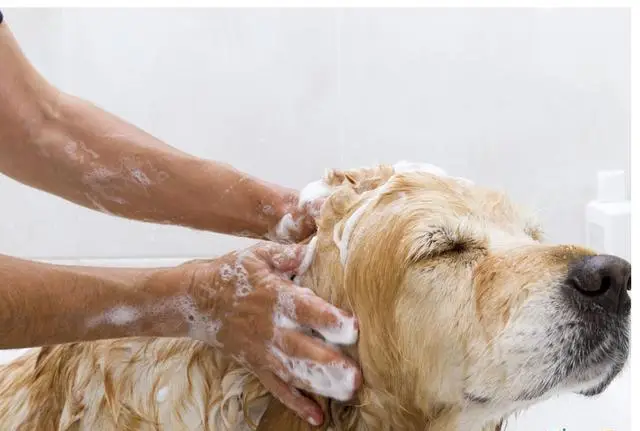Bathing our furry friends can sometimes turn into a struggle, with many dogs exhibiting signs of fear or anxiety at the mere mention of bath time. If you’ve ever wondered why your dog seems to dread the tub, you’re not alone. Understanding the underlying reasons for this fear can help you make bath time a more positive experience for your canine companion. In this article, we’ll explore five key truths about why dogs are afraid of baths and how you can help them overcome their fears.

1. Fear of Water: An Instinctual Reaction
Why Some Dogs Are Naturally Afraid of Water
For many dogs, a fear of water is instinctual. Here’s why some dogs may have a natural aversion to baths:
- Evolutionary Background: Dogs are descendants of wolves, and while many dogs love to play in water, some breeds are less inclined to enjoy it. Their ancestors may have faced dangerous situations in water, leading to an inherent wariness.
- Lack of Exposure: Puppies who haven’t been exposed to water during their critical socialization period may develop a fear of baths later in life. Without positive experiences, water can become a source of anxiety.
Recognizing Water-Related Fear
If your dog shows signs of anxiety, such as trembling, whining, or trying to escape when near water, it may indicate a fear rooted in their instincts. Understanding this can help you approach bath time with more empathy.
2. Sensory Overload: The Experience of Bathing
How Bathing Can Be Overwhelming
Bathing involves multiple sensory inputs that can be overwhelming for dogs. Here are some aspects of the bathing experience that might cause fear:
- Sound and Splash: The sound of running water, splashing, and even the sound of the bath filling can be startling to some dogs. These noises can create an environment that feels chaotic and stressful.
- Water Temperature: If the water is too hot or too cold, it can create discomfort. Dogs may associate the bath with negative sensations, leading to a desire to avoid it altogether.
Creating a Calming Bath Environment
To alleviate sensory overload, consider the following tips:
- Use lukewarm water to ensure comfort.
- Keep noise levels low by speaking softly and minimizing distractions.
- Gradually introduce your dog to the sound of running water when they are calm, helping them associate the noise with positive experiences.
3. Negative Past Experiences: Associative Learning
How Past Trauma Influences Current Behavior
Just like humans, dogs can develop fears based on negative experiences. If your dog has had a bad experience with baths in the past, it can create lasting anxiety:
- Traumatic Bathing Experience: If your dog was bathed roughly or experienced a slip and fall in the tub, they may associate bath time with pain or fear. This can lead to a strong aversion to future baths.
- Overwhelming Grooming Sessions: Some dogs may have been subjected to harsh grooming techniques or forced baths, leading them to associate bathing with stress or discomfort.
Helping Your Dog Overcome Negative Associations
To help your dog overcome past traumas, try the following approaches:
- Use treats and positive reinforcement during bath time to create a more positive association.
- Start with short, low-pressure bath sessions to help them feel comfortable and build trust.
- Consider using calming pheromones or supplements to help ease anxiety.
4. Lack of Control: Feeling Vulnerable
Understanding the Psychology of Dogs
Bath time can leave dogs feeling vulnerable and out of control. Here’s why this feeling might contribute to their fear:
- Restricted Movement: When placed in a bathtub, dogs may feel trapped, unable to escape if they become frightened. This feeling of confinement can lead to panic.
- Loss of Agency: Many dogs enjoy exploring and having the freedom to move around. Being held in place during a bath can create feelings of frustration and anxiety.
Empowering Your Dog During Bath Time
To help your dog feel more in control during bath time:
- Use a non-slip mat in the tub to help them feel secure.
- Allow your dog to enter and exit the bath at their own pace. Give them the choice to explore the area and get comfortable before starting the bath.
- Incorporate play or familiar toys into the bathing routine to help ease their anxiety.
5. Sensitivity to Temperature and Texture
Physical Sensitivities in Dogs
Dogs, like humans, can have varying sensitivities to temperature and texture, which can affect their comfort during baths:
- Texture of Bath Surfaces: Some dogs may dislike the feeling of slippery surfaces like bathtubs or sinks. This can create anxiety as they struggle to find their footing.
- Sensitivity to Water Temperature: As mentioned earlier, if the water is uncomfortable, it can cause stress. Dogs may be sensitive to changes in temperature, making them more likely to resist bath time.
Making Bath Time Comfortable
To ensure a comfortable bathing experience:
- Choose a non-slip surface to help your dog feel stable while in the bath.
- Always test the water temperature before putting your dog in the tub, ensuring it’s pleasant and comfortable for them.
Conclusion
Understanding why dogs fear baths can help you take steps to make the experience less stressful for your furry friend. From instinctual fears to sensory overload and past trauma, there are many factors at play.
By recognizing these truths and making adjustments to your bathing routine, you can help your dog feel more comfortable and secure during bath time. Patience, positive reinforcement, and creating a calm environment are key to transforming bath time into a more enjoyable experience for both you and your beloved pet. With a little effort and understanding, you can help your dog overcome their fear of baths and create a positive association with this essential part of pet care.

Comments (0)